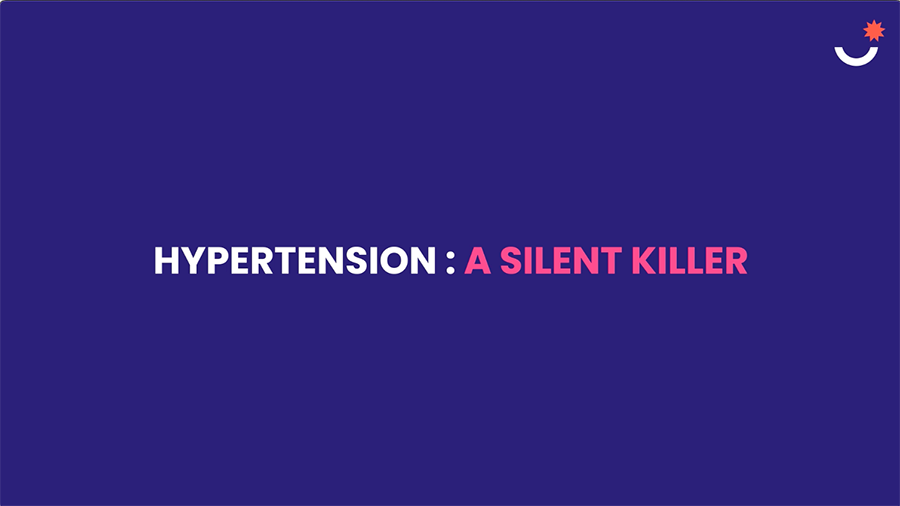Hypertension is a chronic disease characterized by consistently high blood pressure over time. It is one of the main risk factors for cardiovascular disease. Ever on the rise, it is now one of the leading causes of premature death worldwide according to the World Health Organization1. When detected at an early stage and treated appropriately, hypertension is a condition that can be managed very well.
Understanding your blood pressure readings
Mine’s 120 over 80, how about you?
The first number refers to systolic pressure — the pressure exerted on the arteries with each heartbeat (systole).
The second number refers to diastolic pressure — the pressure in the arteries when the heart relaxes (diastole). Even when the heart is at rest, a certain amount of pressure must be maintained in the arteries to prevent them from “collapsing,” meaning narrowing or closing in.
A reading of 120/80 corresponds to a systolic pressure of 120 mm Hg and a diastolic pressure of 80 mm Hg (12 centimeters of mercury = 120 mm Hg; 8 centimeters = 80 mm Hg). This is considered a “normal” blood pressure. Hypertension is diagnosed when blood pressure is equal to or greater than 140/90.
1.28
An estimated 1.28 billion adults aged 30–79 years worldwide have hypertension1
46%
An estimated 46% of adults with hypertension are unaware that they have the condition1
1 in 2
One out of every patient with hypertension does not follow their treatment correctly5
No warning signs
Patients with high blood pressure may experience dizziness, headaches, palpitations (see infographic below), but this is rarely the case. Hypertension often has no symptoms. Taking one’s blood pressure may therefore be the only indicator of this condition, so it is important to have it blood pressure checked regularly by a health care professional. Likewise, it is crucial to raise awareness among your loved ones about the importance of regular monitoring.
Screening is a quick and painless process, and the results are known immediately.
You can also have your blood pressure taken in a pharmacy, or on your own using a portable blood pressure monitor and then discuss the readings with your doctor.

What are the risk factors?
Although there is no apparent cause of hypertension, several factors increase the risk. For example, a diet too rich in salt, fat or sugar, lack of physical activity, stress, smoking, excessive alcohol consumption, being overweight, etc. By changing one’s lifestyle, it is possible to take direct action to lower blood pressure.
However, some factors cannot be controlled, such as:
The combination of these factors reduces the efficiency of blood circulation and makes the heart muscle work harder. The excessive pressure on the heart weakens the arteries, making them stiff and promoting the appearance of atheromatous plaques (build-up of cholesterol on the artery walls). A hypertensive patient has fragile arteries and a heart that is fatigued.

ABOUT SERVIER
We are the leading global pharmaceutical group in hypertension and rank 5th in cardiology3. For over 70 years, we have been committed to addressing cardiovascular diseases, including hypertension.
As the profiles of hypertensive patients vary, we are working on more personalized solutions to improve therapeutic adherence. For example, we are capitalizing on our expertise in cardiometabolism, with the development of Single Pill Combinations (SPC) or fixed-dose combinations. These treatments combine several active ingredients in a single tablet.
We also fully support the May Measure Month screening initiative organized by the International Society of Hypertension (ISH). For several years now, we have committed to improving hypertension screening through our #BecauseISaySo global awareness campaign. Its purpose is to give patients the information and tools they need to make checking their blood pressure a habit.
Finally, our MyHealthPartner website is dedicated to patients suffering from hypertension as well as their loved ones and health care professionals. It provides a wealth of information on chronic diseases and in particular, hypertension.
REMEMBER
[1] https://www.who.int/fr/news-room/fact-sheets/detail/hypertension, consulted on 03/12/25
[2] https://www.who.int/teams/noncommunicable-diseases/hypertension-report, consulted on 03/12/25
[3] https://www.ameli.fr/assure/sante/themes/hypertension-arterielle-hta/definition-facteurs-favorisants, consulted on 03/12/25
[4] IQVIA, Analytics Link / World 76 countries – MAT Q1-2024
[5] NCD Risk Factor Collaboration (NCD-RisC). Lancet. 2021 Sep 11;398(10304):957-980 // Olsen MH, et al. Lancet. 2016 Nov. 26;388(10060):2665-2712.
